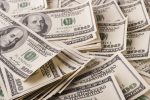As markets retreat, U.S. dollar-related exchange traded funds have stood out, with the greenback hitting a 20-year high.
On Monday, the Invesco DB US Dollar Bullish (NYSEArca: UUP) was flat and the WisdomTree Bloomberg U.S. Dollar Bullish Fund (NYSEArca: USDU) increased 0.4%.
UUP tracks the price movement of the U.S. dollar against a basket of currencies, including the euro, Japanese yen, British pound, Canadian dollar, Swedish krona, and Swiss franc. The actively managed USDU tracks the USD against a broader basket of developed and emerging market currencies, including China, India, South Korea, Switzerland, Australia, Mexico, the United Kingdom, Canada, Japan, and Europe.
Meanwhile, the U.S. Dollar Index touched 104.19 on Monday, marking its highest level since December 2002, CNBC reports.
The Federal Reserve’s aggressive monetary policy outlook to curb four-decade inflation levels has helped support the strength of the USD. Atlanta Fed President Raphael Bostic recently stated that the Fed can maintain half-percentage-point interest rate hikes for the next two to three policy meetings and then gauge how inflation and the economy are doing.
“I was waiting for more pushback from the Fed to say they are not on that preset course of half-point increases and it just goes to show you right now, the dollar, it is benefiting from that interest rate differential trade which seems like it is only going to get wider over these next several months,” Edward Moya, senior market analyst at Oanda, told CNBC.
“Also there is a tremendous amount of worry on Wall Street and you are seeing safe-haven flows continue to come towards the dollar,” Moya added.
Many investors have also been focused on capital preservation as slowing economic growth, persistent inflation, and more Covid lockdowns in China have contributed to a more safety tilt.
“Any time you see this type of market volatility, investors flock to the safety of cash, and you’re absolutely seeing that dynamic now,” Dan Suzuki, deputy chief investment officer at Richard Bernstein Advisors, told Bloomberg.
“Instead of a shift out of stocks and into a mix of bonds and cash, the moves into cash are being funded by the sales of both stocks and bonds. That’s resulted in a huge spike in the demand for cash,” he added.
For more news, information, and strategy, visit the Alternatives Channel.








